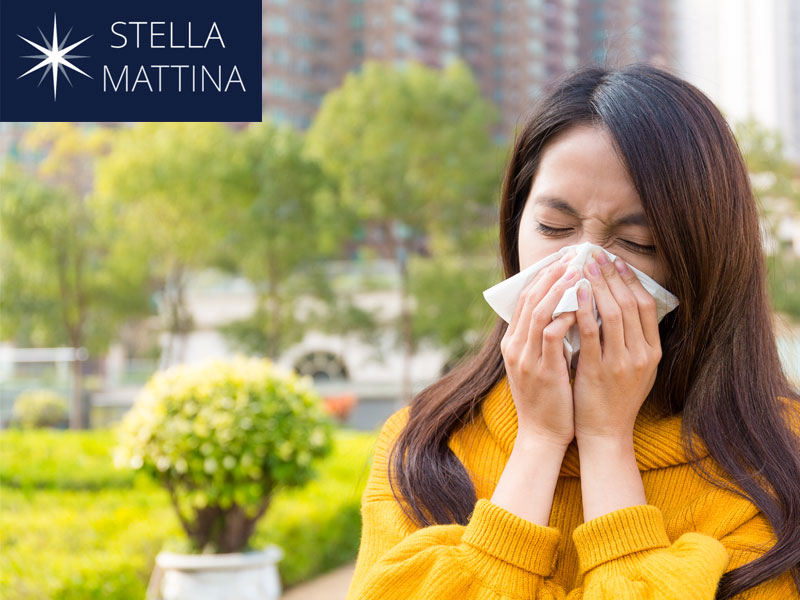
Allergy season is a period when many people experience symptoms due to increased pollen in the air. It can turn a beautiful spring day into a sneezy, congested ordeal. You find yourself dreading certain times of year because of constant sneezing, runny nose, or itchy eyes.
You’re not alone! In fact, the CDC reports that roughly one quarter of American adults suffer from seasonal allergies. The good news is that understanding what they are, when they occur, and how to manage can help you get relief.
When is Allergy Season?
Allergy season doesn’t refer to a single fixed date – it depends on where you live and what you’re allergic to. Generally, however, seasonal allergies flare up when certain plants pollinate.
In many regions, there are three main pollen seasons each year, corresponding to tree, grass, and weed pollens
- Spring: Trees start releasing pollen in late winter or early spring. Common tree allergens include oak, birch, cedar, pine, and cottonwood.
- Summer: As spring transitions to summer, grasses like timothy, ryegrass, Bermuda, and Kentucky bluegrass take over as the primary pollen source.
- Late Summer/Fall: Weeds pollinate as summer ends and fall begins – look out for ragweed, sagebrush, pigweed, and lamb’s quarters.
Keep in mind that these seasons can overlap, and the exact timing varies by climate. In warmer southern regions or tropical climates, some plants pollinate early or even year-round.
When is Peak Allergy Season?
This depends on regional plant life. Generally, tree pollen counts often rise in March and April, grass pollen tends to peak in late spring through summer (May to July), and weed pollen peaks late summer into fall (August-October).
However, in southern states, cedar pollen significantly contributes to extreme seasonal allergies, notably from December through February.
When Are Seasonal Allergies the Worst?
The intensity of seasonal allergies can fluctuate. They usually worsen on dry, windy days when pollen disperses more effectively. Conversely, symptoms often diminish during wet, rainy conditions, as pollen becomes grounded. Peak pollen times, typically early morning through midday, also intensify symptoms.
Seasonal Allergies vs. Common Cold: How to Tell the Difference
It’s easy to confuse a bad case of seasonal allergies with a common cold, since both can cause sneezing, congestion, and a runny nose. But there are some differences to help you figure out what’s going on:
- Cold symptoms typically last 5–10 days and then improve. Allergies, on the other hand, will persist as long as you’re exposed to the allergen.
- Seasonal allergies almost never cause fever or body aches, whereas a cold can cause low-grade fever, fatigue, and mild achiness.
- Allergies often cause itching of the eyes, nose, or throat. You might have red, watery eyes and need to rub your eyes or nose a lot. Colds don’t typically cause such itching.
- Colds may bring on a sore throat or a deeper cough, but allergies cause a scratchy throat or mild dry cough.
Symptoms of Extreme Seasonal Allergies
While many people have mild to moderate sniffles or sneezes, others can experience intense symptoms that significantly impact daily life, such as severe nasal congestion and sinus pressure, violent coughing, intense eye itching or tearing – and even sinus infections, ear infections, or asthma flare-ups.
This begs the question: How can you avoid symptoms during allergy season?
Best Medicine for Seasonal Allergies
The best medicine for allergy season depends on your symptoms. But often a combination of treatments is most effective. The goal is to block or reduce your body’s allergic reaction and relieve your discomfort.
Antihistamines block histamine, the chemical your immune system releases during an allergic reaction.
They help relieve sneezing, runny nose, and itchiness (eyes, nose, throat) and are available over-the-counter as pills (e.g., loratadine, cetirizine, fexofenadine) and as eyedrops or nasal sprays.
Nasal corticosteroid sprays are often the most effective treatment for nasal allergy symptoms. Steroid nasal sprays (like fluticasone, budesonide, or triamcinolone) reduce inflammation in the nasal passages.
They relieve congestion, sneezing, and nasal irritation, and are especially helpful for moderate to severe hay fever. Nasal corticosteroid sprays are often the first-line recommendation because they target allergy symptoms at the source. It’s best to start using them before pollen season is in full swing (ideally a week or two in advance) and use them consistently for maximum benefit.
Decongestants can help shrink swollen nasal tissues. Options include oral pseudoephedrine or phenylephrine, and nasal sprays like oxymetazoline. They can provide quick relief of a blocked nose.
Eye drops can soothe itchy, watery eyes. Antihistamine eye drops (ketotifen, olopatadine) are available over the counter and provide quick relief. Redness-reducing drops may also soothe irritation.
If you wear contact lenses and have eye allergy symptoms, ask a pharmacist or doctor about the best eye drop option and consider wearing glasses during high-pollen days.
Leukotriene modifiers block leukotrienes, another chemical involved in allergic reactions. Montelukast is a prescription tablet that blocks leukotrienes. It’s sometimes prescribed when antihistamines or nasal sprays alone aren’t enough, or if you have co-existing mild asthma triggered by pollen
Immunotherapy (allergy shots or tablets) offers long-term relief for severe or hard-to-manage seasonal allergies. Under an allergist’s supervision, you’re regularly given small doses of the allergens (like pollen) to gradually reduce your sensitivity.
While immunotherapy doesn’t provide immediate relief, over time – typically 3–5 years – it significantly decreases your allergic reactions, making allergy season much easier to handle.
Understanding and proactively managing seasonal allergies empowers you to maintain your health, comfort, and daily routines.
And if you…
- identify symptoms,
- choose appropriate medications, and
- adopt preventive measures,
…you can transform allergy season from a period of discomfort into a much more manageable experience.
Take Control of Allergy Season with Stella Mattina’s Help
With our experience of living in Texas as seasoned doctors dealing with allergy season every year, we’re well placed to discuss with you which kind of medication will best relieve your symptoms. You don’t have to suffer every year! Our primary care doctors can help!
We have same-day appointments to suit your lifestyle – citas el mismo día – and primary care is available at all our locations. Come in and let’s find a solution together!
Dr. Krum is currently in practice in Arlington, TX. He received his undergraduate degree at Texas A&M University, then attended UTMB Galveston for medical school, finishing in 1986, completing his residency there in 1990. Providing a full range of obstetrical and gynecological care, he specializes in the treatment of endometriosis and robotic surgery. He arranges his schedule so that same-day appointments are usually available.
